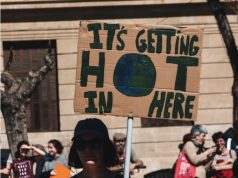INSIGHT by the Potsdam Institute for Climate Impact Research
A price on CO2 emissions from products entering the EU offers unprecedented opportunities in the fight against global warming. But success hinges on how low- and middle-income countries will be engaged. That is the result of a research published today in Nature Communications Earth & Environment.
The European Union (EU) will implement a Carbon Border Adjustment Mechanism (CBAM) to reach its climate mitigation targets while avoiding the relocation of its industries to countries with less stringent climate policies. The exact implementation and possible future extensions of such an EU CBAM are still being debated. A team of researchers led by Timothé Beaufils and Leonie Wenz from the Potsdam Institute for Climate Impact Research (PIK) in cooperation with Michael Jakob from Ecologic Institute and Hauke Ward from Leiden University applied a new throughflow-based accounting method on detailed trade network data to assess the coverage of different implementation options. They quantified how an EU CBAM may affect the EU’s trade partners by channeling the EU carbon price to other countries.
“We find that middle- and low-income countries for which the EU is an important export market would be disproportionally impacted even under conservative implementation options”, lead author Timothé Beaufils from PIK explains.
| Emissions trading
The EU CBAM is an offshoot of the European Emissions Trading Scheme (EU-ETS). The idea is that companies are less likely to move production abroad if imports are subject to the same carbon price as domestic production. The team of researchers concluded that the potential of an EU CBAM is enormous.
„If applied in its least ambitious form, the CBAM would cover about 83 megatons of CO2 (based on 2016 figures). In that case, we are mainly talking about direct emissions from imported steel, aluminium and cement,” Leonie Wenz, author of the study from PIK states.
„If applied in its least ambitious form, the CBAM would cover about 83 megatons of CO2 (based on 2016 figures). In that case, we are mainly talking about direct emissions from imported steel, aluminium and cement.”
-Leonie Wenz, author of the study from PIK
But that is only a fraction of the potential, the study shows. The EU could extend the scope of the CBAM to the point where it covers the direct and indirect carbon footprint of all goods arriving in the EU. In such a scenario, the mechanism could apply to as much as 1,558 megatons of CO2, the scientists argue. Twenty times more, in other words, than the least ambitious scenario.
| Climate justice
A prerequisite is that the CBAM is applied carefully, otherwise low- and middle-income countries could lose out. Researcher Beaufils explains: „ Most studies overlook the implications an EU CBAM may have on middle- and low-income countries, as these are usually small trade partners from the European perspective. But many of these countries have a relatively small domestic market, and a large part of their CO2 emissions are generated when producing goods destined for the EU. By reversing the perspective, we find that middle- and low-income countries that are highly dependent on the EU for their exports would see a large share of their emissions covered by the EU carbon border tax – in fact much more than the US or China.” Cancelling the CBAM for some of those vulnerable countries could be part of the solution. But that does not emerge from the study as the best approach. It would be a carte blanche to emit more CO2.
| Helping the transition
The researchers therefore put forward an alternative: cleverly recycling the revenue generated by the CBAM. The EU could invest that money to help precisely those low- and middle-income countries develop clean industries and cope with climate change-induced damages. Countries most affected by the climate crisis, especially in Africa, Southeast Asia and Latin America, could get most of the proceeds.
| Gamechanger in tackling climate change
According to the study, an EU CBAM could really become a gamechanger tackling climate change, if the scope of the mechanism is expanded and the proceeds are used smartly. „This applies in particular when other major economies, such as the US or China, follow the European example and come up with similar schemes“, Hauke Ward from Leiden University emphasizes.
| Read the full article here:
Timothé Beaufils, Hauke Ward, Michael Jakob, Leonie Wenz (2023): Assessing different European Carbon Border Adjustment Mechanism implementations and their impact on trade partners. Nature Communications Earth & Environment. [DOI 10.1038/s43247-023-00788-4]
| All opinions expressed are those of the author and/or quoted sources. investESG.eu is an independent and neutral platform dedicated to generating debate around ESG investing topics.








